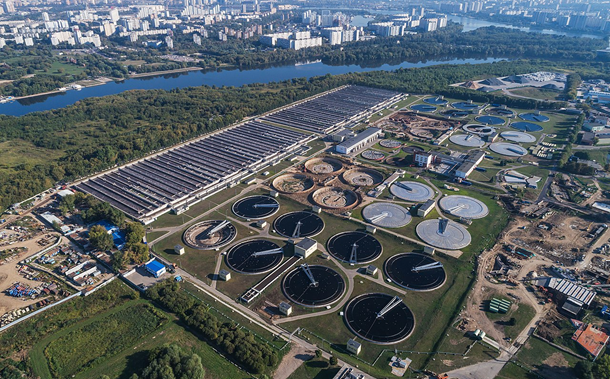Using the Kalman Filter with Satellite Altimetry to Estimate the Water Level of Inland Water
Downloads
The Euphrates River extends for approximately 2,700 km, making it the longest river in Southwest Asia. Reliable water level measurements are obtained through the integration of an advanced outlier rejection system with Kalman filter technology. This study employs water level data from the Database for Hydrological Time Series over Inland Waters (DAHITI) and validates them using in situ measurements collected from gauging stations along the Euphrates River. To improve the accuracy of water level time series across the study area (Lat: 31.9676, Lon: 44.9306 to Lat: 31.0955, Lon: 46.0942), the research incorporates multibeam altimetry data from Envisat, Jason-2, and Sentinel-3A/B/B. Validation of the altimetry techniques is carried out by comparing DAHITI water level records with in situ measurements and other satellite-based datasets. Both the Kalman filter and Hydroweb methods yield Unbiased Root Mean Square Difference (ubRMSD) values ranging between 0.2961–0.3922 cm and 0.536–0.577 cm, respectively. The Nash-Sutcliffe Efficiency coefficient for DAHITI-derived water levels varies between 0.5971 and 0.9831, while Hydroweb produces values from –0.871 to 0.567. Overall, DAHITI-based altimetry height estimates demonstrate superior accuracy compared to other altimeter datasets in most parts of the Euphrates River, with precision strongly influenced by river topography. The application of Kalman filtering further enhances water level monitoring, particularly in regions characterized by complex inland water structures.
Downloads
[1] Boergens, E., Nielsen, K., Andersen, O. B., Dettmering, D., & Seitz, F. (2017). River levels derived with CryoSat-2 SAR data classification - A case study in the Mekong River Basin. Remote Sensing, 9(12), 1238. doi:10.3390/rs9121238.
[2] Böhm, J., Werl, B., & Schuh, H. (2006). Troposphere mapping functions for GPS and VLBI from ECMWF operational analysis data. Journal of Geophysical Research, 111(B2), B02406. doi:10.1029/2005JB003629.
[3] Michailovsky, C. I., McEnnis, S., & Bauer-Gottwein, P. (2012). River monitoring from space: Monitoring the Niger River using radar altimetry. Hydrology and Earth System Sciences, 16(8), 3139–3148. doi:10.5194/hess-16-3139-2012.
[4] Berry, P. A. M., Garlick, J. D., Freeman, J. A., & Mathers, E. L. (2005). Global inland water monitoring from multi-mission altimetry. Geophysical Research Letters, 32(16), 1–4. doi:10.1029/2005GL022814.
[5] Dawson, G., Landy, J., Tsamados, M., Komarov, A. S., Howell, S., Heorton, H., & Krumpen, T. (2022). A 10-year record of Arctic summer sea ice freeboard from CryoSat-2. Remote Sensing of Environment, 268. doi:10.1016/j.rse.2021.112744.
[6] Nilsson, B., Andersen, O. B., Ranndal, H., & Rasmussen, M. L. (2022). Consolidating ICESat-2 Ocean Wave Characteristics with CryoSat-2 during the CRYO2ICE Campaign. Remote Sensing, 14(6), 1300. doi:10.3390/rs14061300.
[7] Heorton, H., Tsamados, M., Armitage, T., Ridout, A., & Landy, J. (2021). Cryosat-2 significant wave height in polar oceans derived using a semi-analytical model of synthetic aperture radar 2011-2019. Remote Sensing, 13(20), 4166. doi:10.3390/rs13204166.
[8] Lian, T., Xin, X., Peng, Z., Li, F., Zhang, H., Yu, S., & Liu, H. (2022). Estimating Evapotranspiration over Heterogeneous Surface with Sentinel-2 and Sentinel-3 Data: A Case Study in Heihe River Basin. Remote Sensing, 14(6), 1349. doi:10.3390/rs14061349.
[9] Shen, M., Duan, H., Cao, Z., Xue, K., Qi, T., Ma, J., Liu, D., Song, K., Huang, C., & Song, X. (2020). Sentinel-3 OLCI observations of water clarity in large lakes in eastern China: Implications for SDG 6.3.2 evaluation. Remote Sensing of Environment, 247, 111950. doi:10.1016/j.rse.2020.111950.
[10] Wan, Y., Zhang, R., Pan, X., Fan, C., & Dai, Y. (2020). Evaluation of the significant wave height data quality for the sentinel-3 synthetic aperture radar altimeter. Remote Sensing, 12(18), 3107. doi:10.3390/RS12183107.
[11] Morris, A., Moholdt, G., Gray, L., Schuler, T. V., & Eiken, T. (2022). CryoSat-2 interferometric mode calibration and validation: A case study from the Austfonna ice cap, Svalbard. Remote Sensing of Environment, 269, 112805. doi:10.1016/j.rse.2021.112805.
[12] McCarthy, D. D., & Petit, G. (2004). IERS Conventions (2003) (IERS Technical Note No. 32). International Earth Rotation and Reference Systems Service. Available online https://iers-conventions.obspm.fr/archive/2003/tn32.pdf (accessed on May 2025).
[13] Bosch, W., Dettmering, D., & Schwatke, C. (2014). Multi-mission cross-calibration of satellite altimeters: Constructing a long-term data record for global and regional sea level change studies. Remote Sensing, 6(3), 2255-2281. doi:10.3390/rs6032255.
[14] Li, P., Li, H., Chen, F., & Cai, X. (2020). Monitoring long-term lake level variations in middle and lower Yangtze basin over 2002-2017 through integration of multiple satellite altimetry datasets. Remote Sensing, 12(9), 1448. doi:10.3390/RS12091448.
[15] Kittel, C. M. M., Jiang, L., Tøttrup, C., & Bauer-Gottwein, P. (2021). Sentinel-3 radar altimetry for river monitoring – a catchment-scale evaluation of satellite water surface elevation from Sentinel-3A and Sentinel-3B. Hydrology and Earth System Sciences, 25(1), 333–357. doi:10.5194/hess-25-333-2021.
[16] Jiang, L., Nielsen, K., Dinardo, S., Andersen, O. B., & Bauer-Gottwein, P. (2020). Evaluation of Sentinel-3 SRAL SAR altimetry over Chinese rivers. Remote Sensing of Environment, 237, 111546. doi:10.1016/j.rse.2019.111546.
[17] Biancamaria, S., Schaedele, T., Blumstein, D., Frappart, F., Boy, F., Desjonquères, J. D., Pottier, C., Blarel, F., & Niño, F. (2018). Validation of Jason-3 tracking modes over French rivers. Remote Sensing of Environment, 209, 77–89. doi:10.1016/j.rse.2018.02.037.
[18] Förste, C., Bruinsma, S., Shako, R., Marty, J. C., Lemoine, J. M., Flechtner, F., ... & Balmino, G. (2014). EIGEN-6C3stat: A high-resolution global gravity field model including GOCE data. GFZ Data Services, Potsdam, Germany.
[19] Le Gac, S., Boy, F., Blumstein, D., Lasson, L., & Picot, N. (2021). Benefits of the Open-Loop Tracking Command (OLTC): Extending conventional nadir altimetry to inland waters monitoring. Advances in Space Research, 68(2), 843–852. doi:10.1016/j.asr.2019.10.031.
[20] Steunou, N., Picot, N., Sengenes, P., Noubel, J., & Frery, M. L. (2015). AltiKa Radiometer: Instrument Description and In–Flight Performance. Marine Geodesy, 38(sup1), 43–61. doi:10.1080/01490419.2015.1006381.
[21] Zhang, X., Jiang, L., Kittel, C. M. M., Yao, Z., Nielsen, K., Liu, Z., Wang, R., Liu, J., Andersen, O. B., & Bauer-Gottwein, P. (2020). On the Performance of Sentinel-3 Altimetry Over New Reservoirs: Approaches to Determine Onboard A Priori Elevation. Geophysical Research Letters, 47(17), 2020 088770. doi:10.1029/2020GL088770.
[22] Scharroo, R., & Smith, W. H. (2010). A global positioning system–based climatology for the total electron content in the ionosphere. Journal of Geophysical Research: Space Physics, 115(A10). doi:10.1029/2009JA014719.
[23] Revel, M., Zhou, X., Modi, P., Crétaux, J.-F., Calmant, S., & Yamazaki, D. (2024). AltiMaP: Altimetry mapping procedure for hydrography data. Earth System Science Data, 16(1), 75–88. doi:10.5194/essd-16-75-2024.
[24] Halicki, M., & Niedzielski, T. (2022). The accuracy of the Sentinel-3A altimetry over Polish rivers. Journal of Hydrology, 606, 127355. doi:10.1016/j.jhydrol.2021.127355.
[25] Jiang, L., Zhao, Y., Nielsen, K., Andersen, O. B., & Bauer-Gottwein, P. (2023). Near real-time altimetry for river monitoring—a global assessment of Sentinel-3. Environmental Research Letters, 18(6), 064022. doi:10.1088/1748-9326/acdd16.
[26] Fernandes, M. J., Lázaro, C., Nunes, A. L., & Scharroo, R. (2014). Atmospheric corrections for altimetry studies over inland water. Remote Sensing, 6(6), 4952–4997. doi:10.3390/rs6064952.
[27] Jiang, L., Nielsen, K., Andersen, O. B., & Bauer-Gottwein, P. (2017). CryoSat-2 radar altimetry for monitoring freshwater resources of China. Remote Sensing of Environment, 200, 125–139. doi:10.1016/j.rse.2017.08.015.
[28] Kalman, R. E. (1960). A New Approach to Linear Filtering and Prediction Problems. Journal of Basic Engineering, 82(1), 35–45. doi:10.1115/1.3662552.
[29] Yang, Y., & Gao, W. (2006). An Optimal Adaptive Kalman Filter. Journal of Geodesy, 80(4), 177–183. doi:10.1007/s00190-006-0041-0.
[30] Eicker, A., Schumacher, M., Kusche, J., Döll, P., & Schmied, H. M. (2014). Calibration/Data Assimilation Approach for Integrating GRACE Data into the WaterGAP Global Hydrology Model (WGHM) Using an Ensemble Kalman Filter: First Results. Surveys in Geophysics, 35(6), 1285–1309. doi:10.1007/s10712-014-9309-8.
[31] Gruber, C., Moon, Y., Flechtner, F., Dahle, C., Novák, P., König, R., & Neumayer, H. (2014). Submonthly GRACE Solutions from Localizing Integral Equations and Kalman Filtering. In: Rizos, C., Willis, P. (eds) Earth on the Edge: Science for a Sustainable Planet. International Association of Geodesy Symposia, vol 139. Springer, Berlin, Germany. doi:10.1007/978-3-642-37222-3_51.
[32] Schwatke, C., Dettmering, D., Börgens, E., & Bosch, W. (2015). Potential of SARAL/AltiKa for Inland Water Applications. Marine Geodesy, 38(SUP1), 626–643. doi:10.1080/01490419.2015.1008710.
[33] Tourian, M. J., Saemian, P., Ferreira, V. G., Sneeuw, N., Frappart, F., & Papa, F. (2023). A copula-supported Bayesian framework for spatial downscaling of GRACE-derived terrestrial water storage flux. Remote Sensing of Environment, 295, 113685. doi:10.1016/j.rse.2023.113685.
[34] Wang, Y., Li, C., Cui, Y., Cui, Y., Xu, Y., Hora, T., ... & Long, D. (2024). Spatial downscaling of GRACE-derived groundwater storage changes across diverse climates and human interventions with Random Forests. Journal of Hydrology, 640, 131708. doi:10.1016/j.jhydrol.2024.131708.
[35] Low, W. Y., Aziz, M. J. A., Idris, N. R. N., & Rai, N. A. (2023). Robust battery state-of-charge estimation with improved convergence rate based on applying Busse’s adaptive rule to extended Kalman filters. Journal of Power Electronics, 23(10), 1529–1541. doi:10.1007/s43236-023-00652-w.
[36] Sulistioadi, Y. B., Tseng, K. H., Shum, C. K., Hidayat, H., Sumaryono, M., Suhardiman, A., Setiawan, F., & Sunarso, S. (2015). Satellite radar altimetry for monitoring small rivers and lakes in Indonesia. Hydrology and Earth System Sciences, 19(1), 341–359. doi:10.5194/hess-19-341-2015.
[37] Machefer, M., Perpinyà-Vallès, M., Escorihuela, M. J., Gustafsson, D., & Romero, L. (2022). Challenges and Evolution of Water Level Monitoring towards a Comprehensive, World-Scale Coverage with Remote Sensing. Remote Sensing, 14(15), 3513. doi:10.3390/rs14153513.
[38] Tourian, M. J., Elmi, O., Chen, Q., & Sneeuw, N. (2021). Global monitoring of inland water dynamics using satellite altimetry and hydrological modeling. Remote Sensing of Environment, 264, 112582. doi:10.1016/j.rse.2021.112582.
[39] Zaidi, A. Z., Vignudelli, S., Khero, Z., Ghauri, B. M. K., Muzaffer, R., Naeem, B., Panhwar, V., Zafar, S., & ul Haque, S. (2021). Indus river water level monitoring using satellite radar altimetry. Advances in Space Research, 68(2), 641–651. doi:10.1016/j.asr.2020.03.044.
[40] Nash, J. E., & Sutcliffe, J. V. (1970). River flow forecasting through conceptual models Part I-A discussion of principles. Journal of Hydrology, 10(10), 282–290. doi:10.1016/0022-.
[41] Bogning, S., Frappart, F., Blarel, F., Niño, F., Mahé, G., Bricquet, J. P., Seyler, F., Onguéné, R., Etamé, J., Paiz, M. C., & Braun, J. J. (2018). Monitoring water levels and discharges using radar altimetry in an ungauged river basin: The case of the Ogooué. Remote Sensing, 10(2), 350. doi:10.3390/rs10020350.
[42] Biancamaria, S., Frappart, F., Leleu, A. S., Marieu, V., Blumstein, D., Desjonquères, J. D., Boy, F., Sottolichio, A., & Valle-Levinson, A. (2017). Satellite radar altimetry water elevations performance over a 200 m wide river: Evaluation over the Garonne River. Advances in Space Research, 59(1), 128–146. doi:10.1016/j.asr.2016.10.008.
[43] Maillard, P., Bercher, N., & Calmant, S. (2015). New processing approaches on the retrieval of water levels in Envisat and SARAL radar altimetry over rivers: A case study of the São Francisco River, Brazil. Remote Sensing of Environment, 156, 226–241. doi:10.1016/j.rse.2014.09.027.
[44] Normandin, C., Frappart, F., Diepkilé, A. T., Marieu, V., Mougin, E., Blarel, F., Lubac, B., Braquet, N., & Ba, A. (2018). Evolution of the performances of radar altimetry missions from ERS-2 to Sentinel-3A over the Inner Niger Delta. Remote Sensing, 10(6), 833. doi:10.3390/rs10060833.
[45] Rai, A. K., Beg, Z., Singh, A., & Gaurav, K. (2021). Estimating discharge of the Ganga River from satellite altimeter data. Journal of Hydrology, 603, 126860. doi:10.1016/j.jhydrol.2021.126860.
[46] Scherer, D., Schwatke, C., Dettmering, D., & Seitz, F. (2020). Long-term discharge estimation for the lower Mississippi river using satellite altimetry and remote sensing images. Remote Sensing, 12(17), 2693. doi:10.3390/RS12172693.
[47] Santos da Silva, J., Calmant, S., Seyler, F., Rotunno Filho, O. C., Cochonneau, G., & Mansur, W. J. (2010). Water levels in the Amazon basin derived from the ERS 2 and ENVISAT radar altimetry missions. Remote Sensing of Environment, 114(10), 2160–2181. doi:10.1016/j.rse.2010.04.020.
[48] Biancamaria, S., Lettenmaier, D.P., & Pavelsky, T.M. (2016). The SWOT Mission and Its Capabilities for Land Hydrology. Remote Sensing and Water Resources. Space Sciences Series of ISSI, Volume 55, Springer, Cham, Switzerland. doi:10.1007/978-3-319-32449-4_6.
- Authors retain all copyrights. It is noticeable that authors will not be forced to sign any copyright transfer agreements.
- This work (including HTML and PDF Files) is licensed under a Creative Commons Attribution 4.0 International License.![]()














